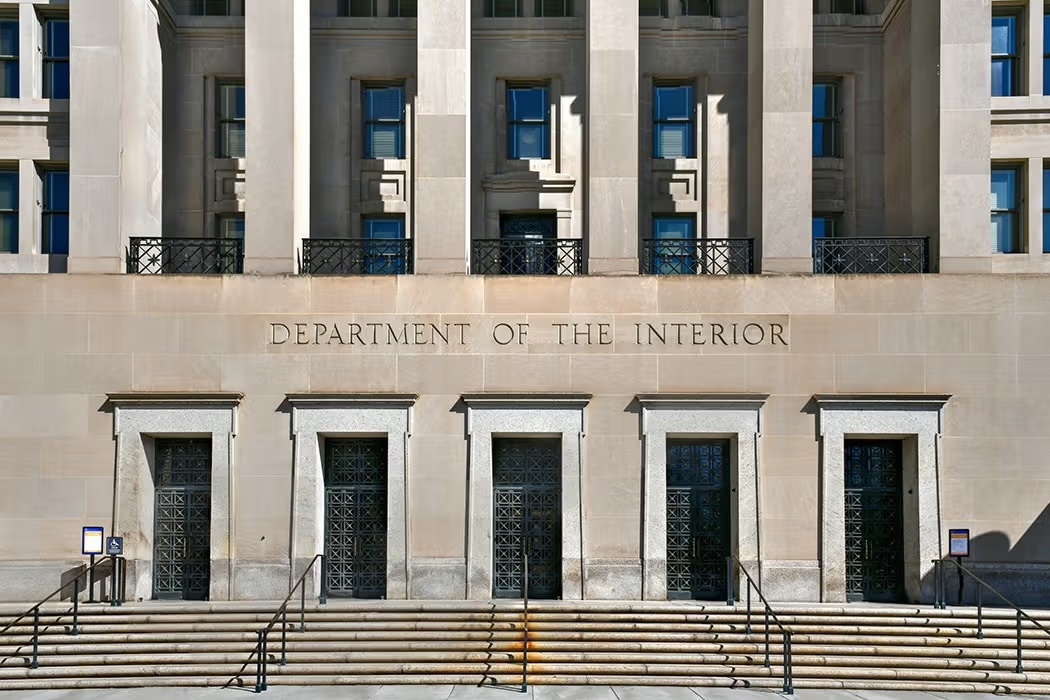
- Details
- By Chez Oxendine
- Policy and Law
President Donald Trump released a detailed look at his fiscal 2026 budget proposal that, if enacted, could reverse surging fortunes in Indian Country over the past several years.
Trump's 1224-page budget submission, released Friday evening, proposes cutting more than $700 million from Bureau of Indian Affairs programs, and $239 million from tribal housing programs. The Indian Health Service (IHS) would receive a small increase but still fall well short of a record high of $8.5 billion in fiscal 2024 — and far short of the $9.5 billion the agency says it needs to meet baseline health needs in 2026.
Many tribal-supporting programs would see either modest increases or significant reductions, following years of expanded federal investment.
The budget also proposes cuts that could impact Indian Country indirectly, including steep reductions in water funding and grants for community development financial institutions. Senator Patty Murray (D-Wash.), vice chair of the Senate Appropriations Committee, said in a statement that the budget proposal would slash “critical investments…in our country’s competitiveness and future,” including those for tribes.
“For President Trump: there's no billionaire left behind—and good luck to everyone else,” Murray said. “President Trump wants to let America’s small businesses go under, turn his back on our tribes, and let trash pile up at our national parks.”
Trump previewed many of the proposed cuts in a politically charged budget letter on May 2. In contrast, the 1,200-plus page technical supplement released Friday is a bureaucratic, non-political document intended for Congress that includes line-item details and offers a clearer look at funding levels across federal programs — including those serving Native communities.Key proposals affecting tribal programs include:
- The Bureau of Indian Affairs would drop to a $2.18 billion budget compared with fiscal 2025’s $2.91 billion allocation. The administration proposes to eliminate the Indian Loan Guarantee and Indian Land Consolidation Funds to save $617 million, and cut $107 million from the Public Safety and Justice Program.
- Trump proposes a modest increase in discretionary spending for the Indian Health Service, with funding rising from $7.8 billion in fiscal 2025 to $7.9 billion in fiscal 2026 — both short of a fiscal 2024 high of $8.5 billion. Within that total, the budget would drop slightly due to a shift of $159 million in diabetes program funding from discretionary to mandatory.
- Indian Housing Block Grants, issued under the Native American Housing and Self Determination Act (NAHASDA), would drop from a record $1.12 billion in fiscal 2025 to $872 million in fiscal 2026 — a drop of more than 22%. However, the budget proposal appears to leave $150 million in competitive housing grants in place, despite a prior announcement to the contrary.
Other programs not directly targeting Indian Country also face cuts. The budget proposal eliminates funding for the Community Development Fund, which includes competitive grants for affordable housing assistance.
State and tribal programs that support drinking water and sewer systems could be cut at the Environmental Protection Agency. The budget proposes slashing the Drinking Water State Revolving Fund from fiscal 2025 allocation of $1.09 billion to just $150 million in fiscal 2026. In fiscal 2025, tribes received $22.5 million through this program.
The budget also proposes restructuring the Community Development Financial Institution (CDFI) Fund into the Rural Community Development Fund. The new structure omits a Native-specific set-aside: where the budget lists a total of $51 million for Native CDFIs in fiscal 2024 and 2025, the proposed 2026 budget eliminates this funding.
Trump also proposes $12 billion in cuts to the Department of Education, including reducing the maximum Pell Grant from $7,395 to $5,710 — a nearly 23% reduction. According to data published by the National College Attainment Network, more than half of Native American students utilize a Pell Grant.
The budget proposal is not yet law, and both Republican and Democratic lawmakers have said it is incomplete. Rep. Tom Cole (R-Okla.), chair of the House Appropriations Committee and a member of the Chickasaw Nation, told The Hill that Republicans need more detail. .
“There needs to be a lot more programmatic detail to write these bills to,” Cole told The Hill. “Their skinny line budget is just that. It’s not a full presidential budget.”
Murray said the budget wouldn’t make it far in the Senate under her watch. While the reconciliation process requiring only a simple majority will be used for Trump’s “Big, Beautiful Bill” soon, regular appropriations bills will require Democratic votes to pass.
“This is a draconian proposal to hurt working people and our economy, and it is dead on arrival in Congress as long as I have anything to say about it,” Murray said.
Editor's Note: This story has been updated to clarify the proposed discretionary budget for IHS and the shift of the diabetes program from discretionary to manadatory.
